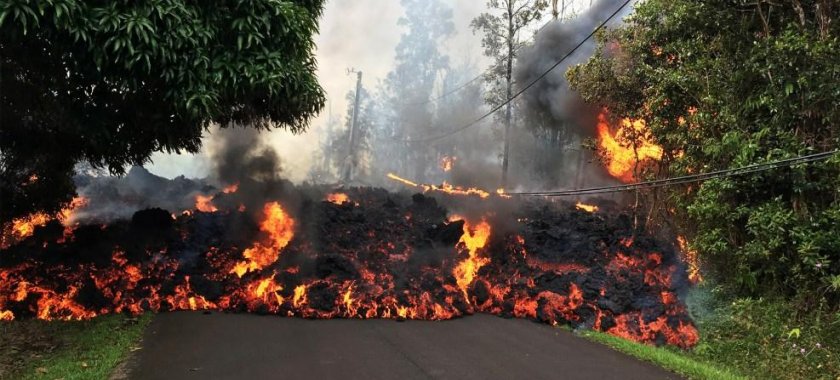A small explosion at the summit of Hawaii’s Kilauea Volcano shot more ash high into the atmosphere, putting communities in the southern part of the Big Island at risk, the U.S. Geological Survey (USGS) said, Reuters reported.
The volcano, which has been erupting since early May, has sent occasional columns of ash and volcanic gas into the atmosphere at between 10,000 (3,050 meters) and 30,000 feet (9,145 meters) above sea level, it said.
On Sunday, another explosion spewed ash from the volcano, creating a driving hazard for roads on parts of the Big Island.
One of the fissures in the volcano shot rock 160 feet (49 meters) up on Tuesday, slightly lower than the 180 feet (55 meters) it reached from Saturday night into Sunday, the USGS said.
"The summit itself is fairly stable, with continued seismic activity and a high likelihood of additional small explosions,” said Richard Rapoza, a spokesman for the Hawaii Emergency Management Agency, in an email on Tuesday. "The lava flow is contained within a channel flowing to the ocean with only minor outflows.”
The ash produced in the summit explosions may also be irritating to sensitive or susceptible individuals, Rapoza said.
The eruption, which entered its 40th day on Tuesday, stands as the most destructive in the United States since at least the violent 1980 eruption of Mount St. Helens in Washington state, according to geologist Scott Rowland, a volcanologist at the University of Hawaii at Manoa.
While Hawaii’s Kilauea’s volcano has produced extremely hot and relatively slow moving lava flows, which have engulfed hundreds of structures but allowed people to evacuate, Guatemala’s Fuego ejected much more dangerous pyroclastic flows, which kill everything in their path because they travel so fast and so far.
The Mount St. Helens eruption also ejected pyroclastic flows, which reduced hundreds of square miles (km) to wasteland, and killed nearly 60 people and thousands of animals.
The Hawaii eruption, with high walls of slow-moving lava, has engulfed about 600 homes since May 3, Hawaii County Mayor Harry Kim said last week.
Vacationland, a private development believed to comprise about 160 homes, was completely erased, and at least 330 houses were devoured by lava at Kapoho Beach Lots, Kim said.
On Saturday, hundreds of construction workers and volunteers, including officials from the Hawaii National Guard and the Hawaii Regional Council of Carpenters, began building 20 temporary housing units in Pahoa for families forced from their homes.
Icmal.Az



























